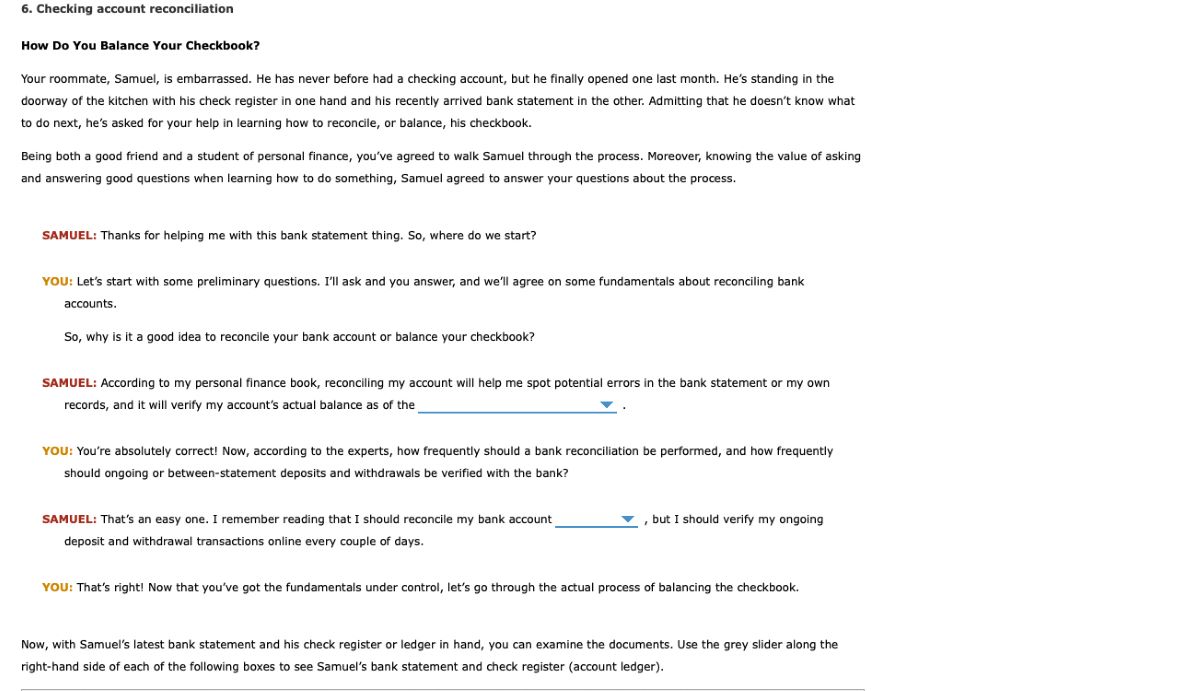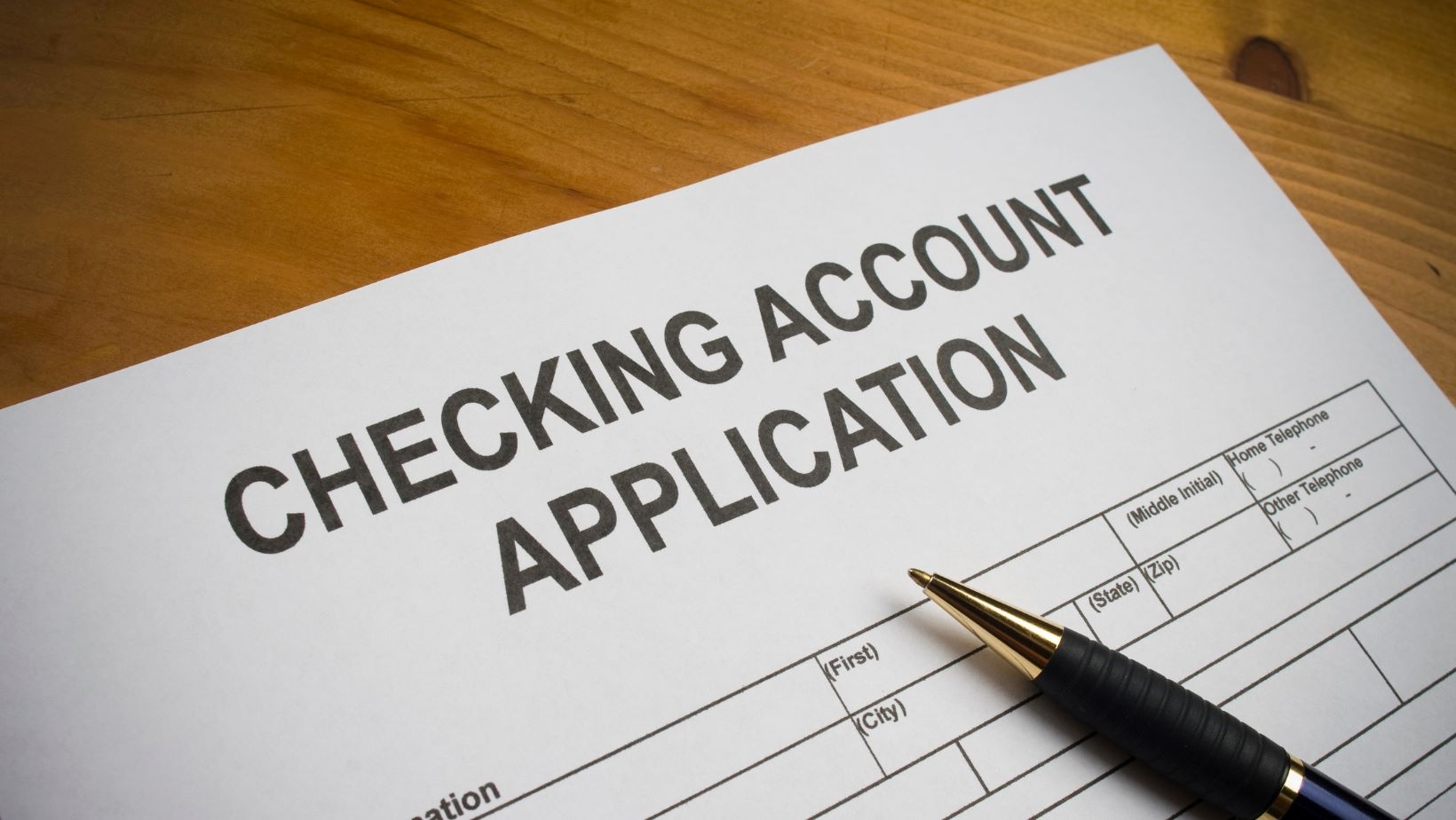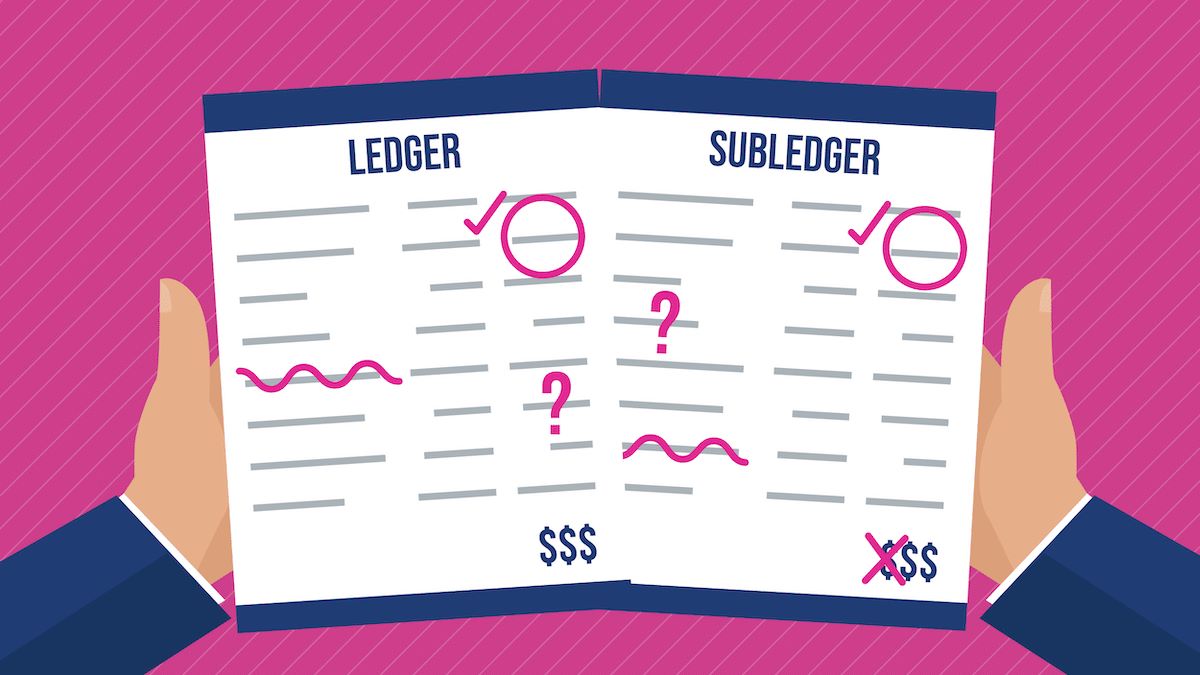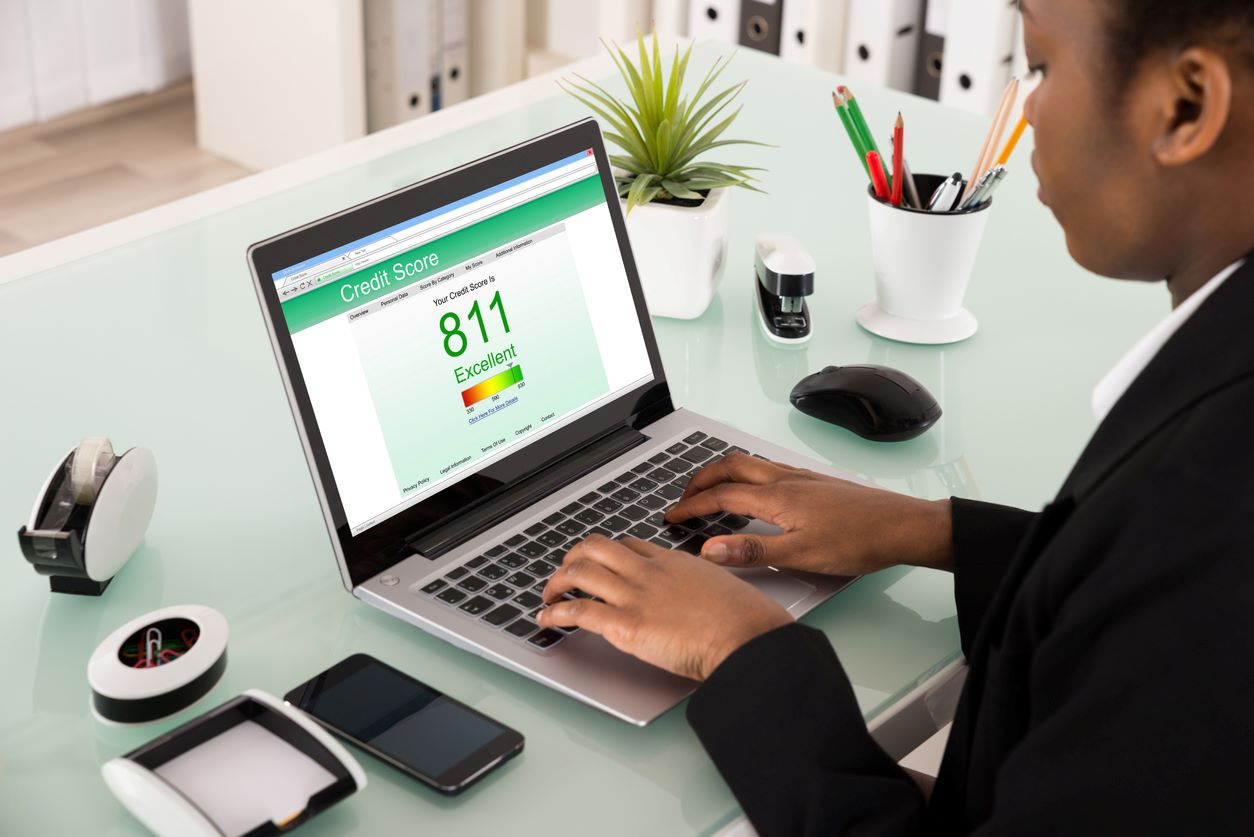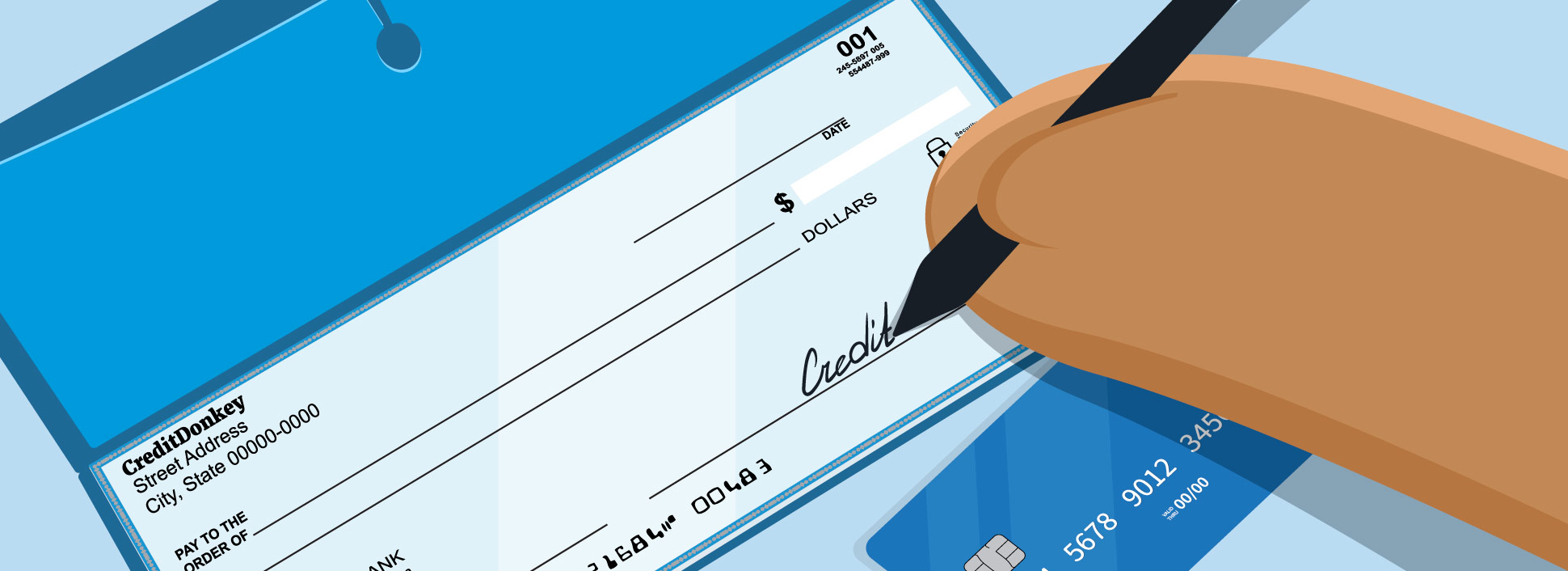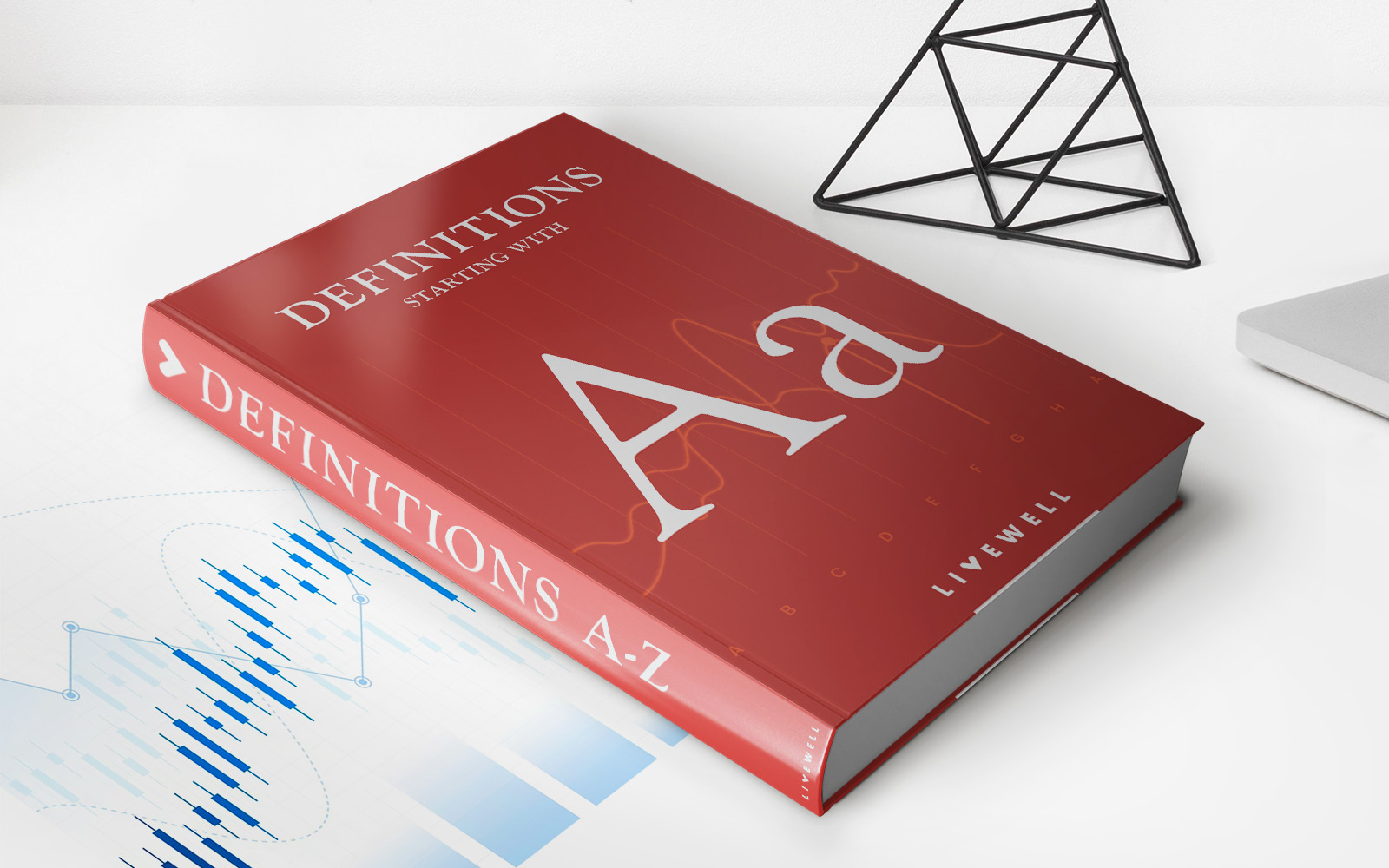Home>Finance>What Three Things Would Influence Your Decision The Most When Looking For A Checking Account?


Finance
What Three Things Would Influence Your Decision The Most When Looking For A Checking Account?
Modified: February 21, 2024
Looking for a checking account? Discover the top three factors that will influence your decision the most. Find the perfect finance solution for your needs.
(Many of the links in this article redirect to a specific reviewed product. Your purchase of these products through affiliate links helps to generate commission for LiveWell, at no extra cost. Learn more)
Table of Contents
Introduction
When searching for a checking account, there are several factors that can greatly influence your decision. Choosing the right account is essential as it will directly impact your daily banking experience. While everyone’s priorities may differ, there are three key considerations that tend to be the most influential for most individuals:
1. Convenience: One of the primary factors that people look for in a checking account is convenience. This includes factors such as the availability and accessibility of branches and ATMs, as well as online banking features and mobile banking capabilities. Having easy access to your funds and being able to manage your account on-the-go is crucial in today’s fast-paced world.
2. Fees and Charges: Another significant consideration would be the fees and charges associated with the checking account. This includes monthly maintenance fees, overdraft fees, ATM fees, and other transaction charges. Finding an account with low or no fees can help you save money and avoid any unnecessary expenses.
3. Customer Service: Good customer service is paramount when choosing a checking account. Dealing with any banking issues or inquiries can be stressful, so it’s essential to select a financial institution that provides reliable and responsive customer support. Look for banks or credit unions with a track record of excellent customer service and multiple communication channels to ensure you have a positive banking experience.
While these three factors are often the most influential, they are not the sole considerations when choosing a checking account. Other factors that may play a role in your decision-making process include interest rates, overdraft protection options, account security, and additional services or benefits offered by the financial institution.
Now that we have discussed the key factors that influence checking account decisions, let’s explore each of them in more detail to help you make a well-informed choice for your financial needs.
Convenience
Convenience is one of the most important factors to consider when choosing a checking account. It encompasses various aspects that can greatly simplify your banking experience and save you time and effort.
Firstly, consider the availability and accessibility of branches and ATMs. If you prefer face-to-face interactions or need to deposit cash or checks frequently, having a bank with a branch near your home or workplace can be highly beneficial. Additionally, having access to a network of ATMs ensures that you can easily withdraw cash without incurring additional fees.
Furthermore, the online banking features of a checking account are crucial in today’s digital era. Look for a bank that offers robust online banking services, including the ability to view account balances and transaction history, transfer funds between accounts and pay bills conveniently online. Online banking allows you to manage your finances from the comfort of your own home or on the go, giving you greater control over your money.
In addition to online banking, consider the mobile banking capabilities of the financial institution. Mobile apps with features such as mobile check deposit and fund transfers through your smartphone can simplify your banking tasks even further. These convenient tools allow you to deposit checks by simply taking a photo and securely manage your finances on the go.
Another aspect of convenience is the availability of customer support. Ensure that the bank provides multiple channels of communication, such as 24/7 phone support or live chat, to address any banking issues or inquiries you may have promptly. A responsive customer service team can alleviate any stress or frustration that may arise during your banking experience.
Ultimately, choosing a checking account that offers convenience can make a significant difference in your day-to-day banking. By considering factors such as branch and ATM accessibility, robust online and mobile banking features, and reliable customer support, you can streamline your finances and have greater control over your money.
Fees and Charges
When selecting a checking account, it is crucial to consider the fees and charges associated with the account. These fees can significantly impact your banking experience and potentially eat into your hard-earned money. Understanding the different fees and charges will help you choose an account that aligns with your financial goals and preferences.
One of the most common fees is the monthly maintenance fee. Some banks require a minimum balance to waive this fee, while others charge it regardless of your account balance. Consider your average monthly balance and whether you can meet the requirements to avoid this fee.
Overdraft fees are another important consideration. These fees occur when you spend more money than you have available in your checking account. They can quickly add up and become a financial burden. Look for an account with low or no overdraft fees or consider opting for overdraft protection, which can help avoid overdraft fees altogether.
ATM fees are also worth considering. If you frequently use ATMs outside of your bank’s network, you may incur additional fees for withdrawals. Some banks reimburse a certain amount of these fees or have a wide network of ATMs, which can save you money in the long run.
Transaction fees for services such as transfers, stop payments, or check orders should also be taken into account. These fees vary from bank to bank, so it’s important to compare the rates and choose an account that aligns with your transaction needs.
It’s worth noting that some banks offer fee-free checking accounts, especially for students or individuals who meet certain criteria. These accounts can provide significant savings in terms of fees and charges, making them a favorable option for many people.
When comparing checking account options, it’s important to review the fee schedule provided by the bank. Make sure you understand all the potential fees that apply to the account and weigh them against your usage patterns and financial situation. By selecting an account with reasonable fees and avoiding unnecessary charges, you can have peace of mind knowing that your money is working for you.
Online Banking Features
In today’s digital age, online banking features have become a crucial consideration when choosing a checking account. With the convenience and accessibility they offer, online banking has revolutionized the way we manage our finances. Here are several key online banking features to look for:
1. Account Management: Ensure that the checking account provides a user-friendly online platform where you can easily access and manage your account. This includes checking your balance, reviewing transaction history, and monitoring your spending habits. The ability to customize alerts and notifications can also help you stay on top of your finances.
2. Funds Transfer: Online banking should allow you to transfer funds between your accounts seamlessly. Whether it’s transferring money to your savings account, paying off a credit card balance, or sending money to a friend, the process should be quick and efficient.
3. Bill Payment: Look for a checking account that offers online bill payment services. This feature enables you to set up recurring payments or one-time payments to pay bills directly from your checking account. It saves time, eliminates the need for writing checks or mailing payments, and helps you stay organized.
4. Mobile Check Deposit: The convenience of depositing checks through your smartphone is a game-changer. Look for a checking account that offers mobile check deposit, allowing you to simply take a photo of the check and submit it through the mobile banking app. This feature eliminates the need to visit a branch or ATM to deposit checks, making it a time-saving and hassle-free option.
5. Budgeting Tools: Some online banking platforms provide budgeting tools and expense tracking features. These tools can help you categorize your expenses, set savings goals, and get insights into your spending patterns. Having access to these tools within your checking account can assist you in managing your money more effectively.
6. Security Measures: Online banking should prioritize the security of your financial information. Look for accounts that offer multifactor authentication, encryption technologies, and fraud protection measures. It’s also important to choose a bank with a strong reputation for keeping customer information safe and secure.
By considering these online banking features, you can ensure that your checking account provides the technological advancements and convenience needed for seamless financial management. Online banking allows you to take control of your finances, save time, and have access to your account anytime, anywhere.
Customer Service
When choosing a checking account, it’s essential to consider the quality of customer service provided by the financial institution. Dealing with any banking issues or inquiries can be frustrating, so having reliable and responsive customer support is crucial for a positive banking experience. Here are some key factors to consider regarding customer service:
1. Multiple Communication Channels: Look for a bank that offers various ways to communicate with their customer service team. This can include phone support, email, live chat, or even social media channels. Having multiple options ensures that you can easily reach out to them and get the assistance you need in a way that is most convenient for you.
2. Response Time: Timely responses are crucial when you have questions or concerns. Check reviews or ask others about the average response time of the bank’s customer support team. A prompt and efficient response demonstrates the bank’s commitment to serving its customers.
3. Availability: Consider the customer service hours of the bank. Do they offer 24/7 support? If not, what are their operating hours? It’s important to choose a bank that aligns with your schedule and can provide assistance when you need it most.
4. Knowledgeable Staff: Customer service representatives should be knowledgeable about the bank’s products, policies, and procedures. They should be able to provide accurate and helpful information, guiding you through any banking-related questions or issues you may have.
5. Problem Resolution: Evaluate the bank’s ability to resolve any problems or issues effectively. Look into reviews or testimonials from other customers to gauge their experiences with problem resolution. A bank that takes responsibility, listens to customer concerns, and offers satisfactory solutions is a sign of excellent customer service.
6. Reputation: Research the bank’s reputation for customer service. Look for online reviews or check customer satisfaction ratings provided by reputable sources. A bank with a positive reputation for customer service is more likely to provide a satisfying banking experience.
Remember, customer service is not just about addressing problems; it is also about proactive assistance. Some banks provide educational resources, financial advice, or assistance with personal finance management. These additional services can significantly enhance your banking experience and help you make informed financial decisions.
By considering the quality of customer service, you can ensure that your checking account provider is committed to providing the necessary support and assistance throughout your banking journey. Reliable customer service can make a significant difference in your overall satisfaction with the account and the financial institution as a whole.
Interest Rates
Interest rates play a significant role when choosing a checking account as they determine how much you can earn on your deposited funds. While checking accounts traditionally do not offer high-interest rates compared to savings accounts or other investment vehicles, it’s still important to consider the interest rates offered by different banks. Here are a few key points to keep in mind:
1. Interest-bearing Checking Accounts: Some banks offer interest-bearing checking accounts that provide a certain percentage of interest on the balance maintained in the account. These accounts are especially beneficial if you tend to keep a higher balance in your checking account. Consider the interest rate and whether it aligns with your financial goals before opting for an interest-bearing account.
2. Tiered Interest Rates: Some banks offer tiered interest rates, where the interest rate increases as your balance in the account grows. This can be an attractive option for those who maintain a higher average balance in their checking account. Make sure to compare the different tiers and the corresponding interest rates to determine if it’s a worthwhile feature for you.
3. Promotional or Introductory Rates: Banks may offer promotional or introductory interest rates for a limited time to attract new customers. These rates can be higher than the standard rates, but it’s essential to understand how long the promotional period lasts and what the rate will be afterward. Consider whether the initial boost in interest is worth any potential changes to the rate in the future.
4. Relationship Benefits: Some banks offer relationship benefits to customers who have multiple accounts or maintain a specific banking relationship with them. These benefits can include higher interest rates or additional perks. If you already have a relationship with a bank or plan to open other accounts, such as savings accounts or loans, consider whether these relationship benefits can add value to your overall banking experience.
It’s important to note that while interest rates are a consideration, they should not be the sole determining factor when choosing a checking account. Since checking accounts are primarily transactional accounts for everyday expenses, other factors such as fees, convenience, and customer service should also be taken into account. However, if interest is a priority for you, comparing interest rates among different banks can help you make an informed decision.
Keep in mind that interest rates can fluctuate over time, so it’s important to regularly monitor the rates offered by your bank and reevaluate your options if necessary. By considering the interest rates alongside other factors, you can select a checking account that strikes the right balance between earning potential and meeting your banking needs.
Overdraft Protection Options
Overdraft protection is an important feature to consider when choosing a checking account. It provides a safety net to help you avoid overdrawing your account and incurring costly overdraft fees. Here are a few key points to understand about overdraft protection options:
1. Overdraft Transfers: Some banks offer overdraft transfers, which link your checking account to another account, such as a savings account or line of credit. If you have insufficient funds in your checking account, the bank automatically transfers the necessary funds from the linked account to cover the transaction, thereby preventing overdraft fees. Keep in mind that fees or interest may still apply for these transfers.
2. Overdraft Line of Credit: Another option is an overdraft line of credit, which works like a personal line of credit. If you overdraw your checking account, the bank will automatically transfer funds from your line of credit to cover the negative balance. You then repay the borrowed amount with interest. This option provides flexibility and convenience but does come with interest charges.
3. Opting Out of Overdraft Protection: Some individuals prefer to opt out of overdraft protection altogether. This means that if you have insufficient funds in your account, the transaction will be declined. While this option helps avoid overdraft fees, it’s important to be mindful of transaction rejections and ensure you have sufficient funds for essential payments or automatic debits.
It’s essential to carefully review the terms and conditions of the overdraft protection options, including any associated fees or interest rates. Be aware that overdraft protection is not a free service, and fees may still apply, even if it helps you avoid overdraft fees.
When considering overdraft protection options, evaluate your banking habits and financial situation. If you frequently make transactions close to your account balance or have potential unexpected expenses, having a form of overdraft protection can provide peace of mind. On the other hand, if you manage your account more closely and are confident in maintaining a positive balance, opting out of overdraft protection might be a viable option.
Ultimately, overdraft protection options can help you avoid costly fees and maintain control over your finances. Choose an option that aligns with your needs and banking habits, ensuring that it provides the right balance of convenience and financial security.
Account Security
Ensuring the security of your checking account is of utmost importance. When choosing a checking account, it’s crucial to consider the security measures implemented by the financial institution to protect your account and personal information. Here are a few key factors to consider regarding account security:
1. Encryption and Secure Authentication: Look for a bank that uses strong encryption technologies to safeguard your online banking transactions and communications. SSL (Secure Socket Layer) encryption is commonly used to ensure that your data is encrypted and protected during transmission. Additionally, verify that the bank has secure authentication methods in place, such as multifactor authentication, to add an extra layer of security to your account.
2. Fraud Monitoring and Alerts: Find out if the bank has robust fraud monitoring systems in place to detect and prevent fraudulent activities on your account. This includes monitoring for unauthorized transactions and unusual account activity. Additionally, opt for a bank that offers real-time or near real-time alerts, such as text messages or email notifications, to inform you of any suspicious account activity.
3. Lost or Stolen Card Protection: It’s important to understand how the bank handles lost or stolen debit cards. Look for banks that offer quick card replacement services and zero liability policies for unauthorized transactions. These measures can protect you from financial loss in the event of a stolen card or fraudulent activity.
4. Privacy Policies and Data Protection: Review the bank’s privacy policies to gain insight into how they handle and protect your personal information. Ensure that they have strict privacy measures in place and that they do not share your information with third parties without your consent. The bank should also have measures in place to prevent unauthorized access and protect your data from security breaches.
5. Secure Online and Mobile Banking Platforms: The online and mobile banking platforms provided by the bank should be secure and regularly updated to address any potential vulnerabilities. Check if the bank has security measures in place, such as secure login processes, session timeouts, and account activity monitoring, to protect your account while accessing it through these platforms.
6. Bank Reputation: Research the reputation of the bank regarding account security. Look for customer reviews or ratings that specifically mention the bank’s commitment to maintaining high levels of security. A bank with a strong reputation for account security is more likely to prioritize the protection of your funds and personal information.
By choosing a checking account with robust security measures in place, you can have peace of mind knowing that your account and personal information are protected. Prioritize banks that invest in cutting-edge security technologies and have a track record of safeguarding their customers’ accounts.
Mobile Banking Capabilities
In our increasingly digital world, mobile banking capabilities are becoming a critical consideration when choosing a checking account. The ability to manage your finances on-the-go through a mobile banking app can provide convenience, flexibility, and real-time access to your account. Here are several key factors to consider:
1. Mobile Banking App: Ensure that the bank offers a user-friendly and feature-rich mobile banking app that is compatible with your device. The app should provide a seamless and intuitive user experience, allowing you to perform various banking tasks with ease.
2. Account Access: The mobile banking app should allow you to access and manage your checking account 24/7. This includes checking your account balances, reviewing transaction history, and initiating transfers between accounts.
3. Mobile Check Deposit: Look for a checking account that offers mobile check deposit functionality. This feature allows you to deposit checks by simply taking a photo of the check through the app. Mobile check deposit eliminates the need to visit a branch or ATM, saving you time and effort.
4. Bill Payment: Check if the mobile banking app provides a convenient way to pay bills directly from your checking account. Look for features such as bill pay setup, scheduling recurring payments, and the ability to view and manage your upcoming bills.
5. Alerts and Notifications: Mobile banking apps should offer customizable alerts and notifications to keep you informed about important account activities. You can receive alerts for low balance, large transactions, account activity, or payment due dates, helping you stay on top of your finances and avoid any surprises.
6. Security Features: Mobile banking apps should prioritize the security of your financial information. Look for apps that offer biometric authentication, such as fingerprint or face recognition, to ensure only authorized individuals can access your account. Additionally, the app should have robust encryption and fraud monitoring capabilities to protect your data and provide a secure mobile banking experience.
7. Additional Features: Some mobile banking apps offer additional features such as personal finance management tools, budgeting, spending categorization, and financial insights. These features can provide valuable insights into your spending habits and help you manage your money more effectively.
By choosing a checking account with strong mobile banking capabilities, you can have the flexibility and convenience to manage your finances anytime, anywhere. Make sure to evaluate the user experience, functionality, security features, and any additional tools offered by the mobile banking app to ensure it aligns with your banking needs and preferences.
Access to ATMs
When choosing a checking account, it’s important to consider the accessibility of ATMs. ATMs play a crucial role in your banking experience, providing the convenience of withdrawing cash, making deposits, and accessing other banking services. Here are several factors to consider regarding access to ATMs:
1. ATM Network: Look for a checking account that offers access to a wide network of ATMs. The larger the network, the more convenient it will be for you to find an ATM nearby, wherever you are. Consider the bank’s partnerships or affiliations with ATM networks to ensure there are ample ATM options available in your area or places you frequently visit.
2. Fee-Free ATMs: ATM fees can quickly add up, especially if you frequently use ATMs outside of your bank’s network. Some banks reimburse a certain number of ATM fees per month or have agreements with specific networks to provide fee-free access. Opting for a checking account with fee-free ATM access can save you money and make your banking experience more cost-effective.
3. International ATM Access: If you frequently travel internationally or anticipate doing so, consider whether the bank allows access to ATMs in foreign countries. Look for a bank with international ATM partnerships or networks to ensure you have access to cash while abroad, often at more favorable exchange rates compared to currency exchange kiosks.
4. ATM Deposit Availability: If you frequently make cash or check deposits, it’s important to ensure that the ATMs associated with your checking account offer deposit capabilities. This feature allows you to conveniently deposit funds without having to visit a branch during business hours.
5. ATM Surveillance and Security: ATM security is a critical factor to consider. Ensure that the bank takes the necessary measures to safeguard ATMs against skimming devices and other fraudulent activities. Look for ATMs located in well-lit areas and that are monitored by surveillance cameras for added security.
6. Accessibility Assistance: Some individuals may have physical disabilities or special accessibility needs. Consider whether the bank’s ATMs cater to these needs, such as offering Braille instructions, audio assistance, or accessible keypad layouts.
By considering the accessibility of ATMs, you can ensure that you have convenient access to your funds whenever you need them. Evaluate the size of the ATM network, fees associated with out-of-network transactions, international ATM access, security measures, and any additional accessibility features offered by the bank. Having easy and cost-effective access to ATMs can greatly enhance your banking experience and provide the flexibility you need for your financial transactions.
Accessibility of Branch Locations
Although online and mobile banking have revolutionized the way we manage our finances, having access to physical branch locations can still be important for certain banking needs. When choosing a checking account, consider the accessibility of branch locations to ensure that you have convenient access to in-person banking services when necessary. Here are a few factors to consider:
1. Proximity: Evaluate the proximity of branch locations to your home, workplace, or other frequently visited areas. Having a branch nearby can be advantageous when you need to conduct certain transactions that cannot be easily done online or through ATMs, such as cash deposits or complex account inquiries.
2. Operating Hours: Check the operating hours of the branches to ensure they align with your schedule. Some banks have extended hours, weekend availability, or even 24/7 service at certain branch locations. Consider your banking needs and availability while selecting an account to ensure that you can visit a branch when necessary without inconvenience.
3. Services Offered: Different branch locations may offer varying services and expertise. If you anticipate requiring specific banking services, such as mortgage loans, investment advice, or specialized account management, consider whether the branch locations near you have the necessary expertise or dedicated personnel to assist you.
4. Appointment Scheduling: Some banks offer the option to schedule appointments at branches for specific services. This can save you time and ensure that you receive personalized attention when required, rather than waiting in line or dealing with potential service delays.
5. Accessibility Features: If you have accessibility needs or disabilities, evaluate whether the branch locations provide the necessary accommodations. Consider features such as wheelchair accessibility, parking availability, accessible restrooms, or other accommodations that may be important to you.
It’s important to note that while physical branch locations can be beneficial, they may not be a priority for everyone, especially those who prefer the convenience of online or mobile banking. Additionally, some banks offer banking services through partner locations or have agreements with other financial institutions to provide additional branch access.
Ultimately, the accessibility of branch locations should be evaluated based on your individual banking preferences and needs. If in-person banking services are important to you, choose a checking account that provides conveniently located branches with operating hours that suit your schedule. However, if you prefer the convenience of digital banking, the accessibility of branch locations may hold less significance in your decision-making process.
Additional Services and Benefits
When choosing a checking account, it’s worth considering the additional services and benefits that are offered by the financial institution. While the primary focus may be on the checking account features, these additional services can enhance your overall banking experience. Here are some key points to consider:
1. Savings Account Integration: Some banks offer the convenience of linking your checking account to a savings account. This integration allows for automatic transfers between accounts, making it easier to build savings and manage your finances more effectively.
2. Online Budgeting Tools: Look for banks that provide online budgeting tools or personal finance management features within their online banking platforms. These tools can help you track your spending, set financial goals, and gain insights into your financial habits, improving your overall financial well-being.
3. Rewards Programs: Certain checking accounts come with rewards programs that allow you to earn points or cashback on qualifying purchases. These rewards can be redeemed for various incentives such as gift cards, travel rewards, or statement credits. Assess whether the rewards program aligns with your spending habits and offers value to your financial goals.
4. Discounts or Fee Waivers: Some banks offer special discounts or fee waivers for additional services such as safe deposit boxes, cashier’s checks, or money orders. These benefits can help you save money on banking-related expenses.
5. Financial Education Resources: Consider banks that provide financial education resources or workshops to help you improve your financial literacy. These resources can offer valuable insights and guidance on topics such as budgeting, investing, and debt management, empowering you to make informed financial decisions.
6. Credit Score Monitoring: Some financial institutions provide credit score monitoring as an added benefit. Regularly monitoring your credit score can help you stay aware of any changes or potential fraudulent activity, enabling you to take necessary steps to protect your credit health.
7. Relationship Benefits: Banks often offer additional benefits to customers who maintain multiple accounts or have a broader banking relationship with them. These benefits can include higher interest rates, priority customer service, or fee waivers on various services. If you already have or plan to open other accounts, consider whether these relationship benefits provide added value for your overall banking experience.
While these additional services and benefits can be enticing, it’s important to ensure that they align with your financial needs and banking preferences. Evaluate the value they provide and consider whether they outweigh any potential fees or requirements associated with the checking account.
Ultimately, the decision to choose a checking account with additional services and benefits will depend on your individual financial goals and priorities. Assessing these offerings can help you select an account that not only meets your transactional needs but also provides added value and enhanced financial services.
Conclusion
When searching for a checking account, it’s important to consider various factors that can greatly influence your decision. The three key considerations that tend to have the most impact are convenience, fees and charges, and customer service. Convenience encompasses aspects such as the availability and accessibility of branches and ATMs, as well as online banking features and mobile banking capabilities. Finding an account with low fees and charges can help you save money and avoid unnecessary expenses. Reliable and responsive customer service ensures a positive banking experience and prompt resolution of any issues or inquiries.
In addition to these key factors, there are other considerations to keep in mind. Interest rates, although typically lower for checking accounts, can still be a factor to consider for those looking to earn some return on their funds. Overdraft protection options can provide a safety net and prevent costly overdraft fees. Account security should be a priority, with banks offering robust encryption, fraud monitoring, and secure authentication.
Mobile banking capabilities provide the flexibility to manage your finances on-the-go, including features like mobile check deposit and bill payment. Access to ATMs should be taken into account, considering the size of the network, fee structures, and international access. The accessibility of branch locations may also be important for certain banking needs.
Finally, consider any additional services and benefits offered by the financial institution, such as savings account integration, rewards programs, financial education resources, and credit score monitoring.
Choosing the right checking account involves striking a balance between these factors that align with your individual financial needs and preferences. Assess your priorities, evaluate the options available, and make an informed decision based on a comprehensive understanding of the features and benefits offered by each bank.
By taking the time to consider these factors and finding a checking account that meets your needs, you can ensure a seamless and enjoyable banking experience that supports your financial goals and promotes your peace of mind.
